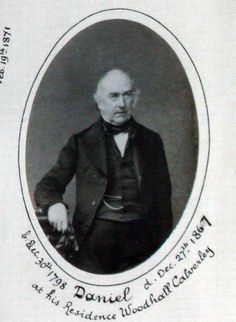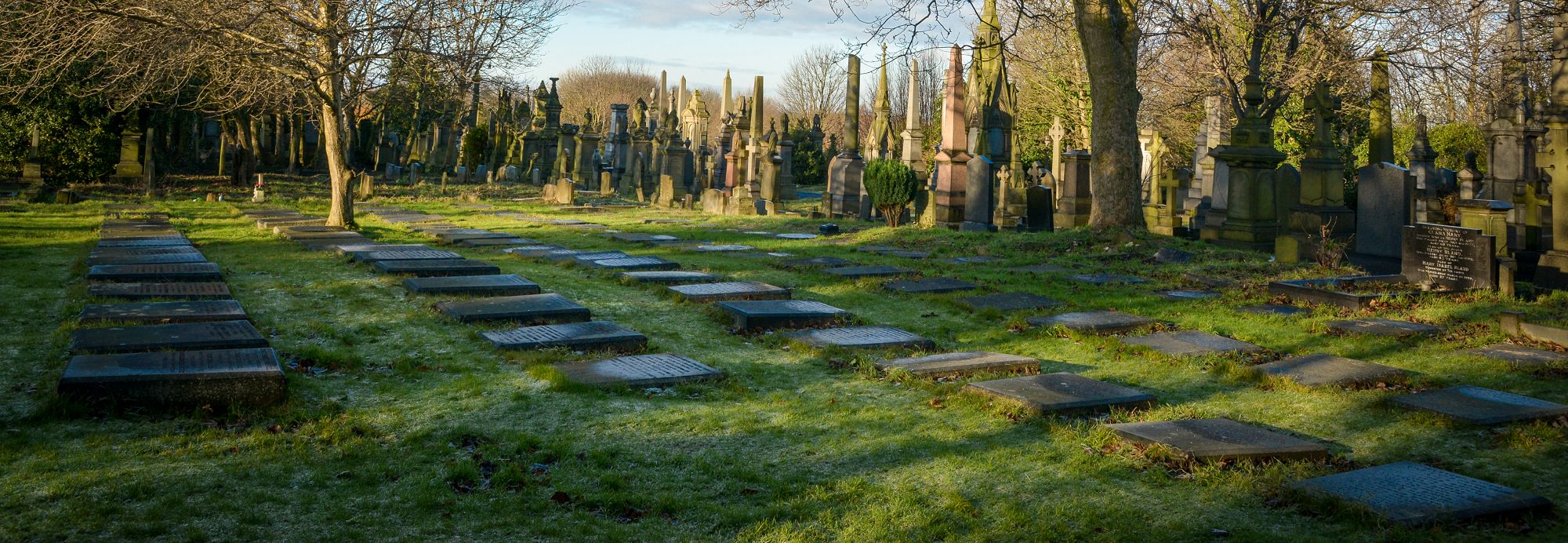Peckover Family
The Peckover Family
Edmund and his nephew Daniel represented the Peckover family in Bradford.
Edmund was born in Fakenham, Norfolk on the 1st July 1757 and was the third son of Richard and Jane. Richard died the same year as Edmund’s birth. Edmund was a strong family name, an ancestor called Edmund had been honourably discharged from Cromwell’s army. He became a merchant. The family were producers of fleeces and provision dealer in Norfolk and continued this trade in the name of Sheringham & Overman, however, it was our Edmund’s older brother Joseph (1754-1836) who remained in Fakenham to carry on the family business and also start a banking business which was associated with the Gurney Bank.
Edmund’s other brother, Jonathan the second son (12.05.1755- 18.12.1833) moved to Wisbech, Cambridgeshire. In 1790 he married Susanna Payne in Warmsworth, Yorkshire however they lived in Wisbech. They had at least five children, one of which was Daniel (D331). Jonathan was initially a grocer and later a banker as were his three surviving sons, William who never married (1791-1877), Algernon (1803-1893) and Daniel (29.12.1798- 27.12.1867). Jonathan lost three sons, Joseph and Edmund in infancy and Richard who died at school(1788-1802).
Jonathan was greatly respected in Wisbech and local trades people soon trusted him with their money. In 1782 he started the Wisbech and Lincolnshire Bank which was again strongly linked with Gurneys Bank. In 1896 these banks and other Quaker banks merged to form Barclays Bank.
Edmund, Jonathan and Joseph had a sister Jane who married Richard Harris of London, a seedsman and corn trader. they had eleven children, three of which were Charles, Alfred and Henry who came to Bradford and entered the banking profession with the Peckovers.
At the age of sixteen, Edmund moves from Norfolk to Bradford to become apprenticed to John Hustler described as a woolstapler. John Hustler was one of the eminent citizens of Bradford and stenuously promoted its industry and the improvement of the town. This allowed Edmund an opportunity to follow in his footsteps. John Hustler probably met the Peckovers during his travels to the wool markets throughout England. John Hustler junior (1771-1842) entered into partnership with Edmund and probably found it useful having him with him when traveling. John Hustler senior (1715-1790) was one of many coal mine owners who wanted an easier way to take coal from his mid-Lancashire mines to industrial towns such as Bradford. He was one of the leading lights in forming the Leeds and Liverpool Company and also the Bradford Canal Company. The Leeds and Liverpool Canal was built in several stages between 1770 and 1816. The Bradford Canal terminating where it connected into the Leeds Liverpool Canal at Shipley was opened in 1784. Limestone was brought by barge from the Skipton area and transferred onto railway trucks that took the limestone to Bowling Iron Works. Coal came down the same truck way from Odsal to the canal.
Edmund Peckover became treasurer of the fund of £3000 that had been raised by subsription to pursue a bill for the Act of Improvement for Bradford. The bill sought permission to elect commissioners, Edmund being one of them to take such steps that were necessary for the lighting watching, and improvements of streets, pathways lanes and openings to passageways in Bradford and parts of Little Horton and to ensure obstructions and nuisances are removed. John Hustler junior was the driving force for the town to obtain such an act which was passed in 1803 with Edmund and John Hustler both appointed as commissioners.
Soon after aquiring the position of treasurer, Edmund announced that he was setting up a new bank in Bradford. Friends were concerned as Bradford already had access to banking services in Leeds. Documents in connection with the setting up of the bank suggests that Edmund had undertaken banking services with his nephew Charles Harris prior to 1792.The bank was set up with Peckover and Charles Harris as partners. Edmund died in 1810 and another of his nephews, Henry Harris stepped in to fill his role together with Edmund’s older brother Joseph who remained in office until his retirement in 1823 when another Harris brother, Alfred entered the business.
The original bank premises was situated in Bank Street (which Scruton believes is how the street got its name. In 1813, the bank moved to Kirkgate and then in 1867 moved to the site now occupied by Barclays Bank in Market Street (Barclays built its building in 1930).
The Bank became the Bradford Old Bank in 1864. It amalgamated with the Birmingham District and Counties Bank in 1907 to form the United Counties Bank, which then amalgamated with Barclays in 1916.
Edmund built Eastbrook House which was noted for its shady grounds and serpentine lake. The description is hardly comparable with the area now hard up against the Shipley-Airedale Road. Peckover Walk became Upper Park Street and ran along one edge of the estate. part of the property was being used as a temporary Friends Meeting House in 1811.
Like most Quakers he had strong views about philanthropy, not only assisting the poor but he was also an abolishionist. In 1806 he met with other like-minded folk in support of William Wilberforce. They were known as the Friends of William Wilberforce. In 1807,his integrity was noted in a Newspaper article.
Daniel Peckover

Daniel was born on 29 December 1798 to Jonathan and Susanna Peckover. His father had moved from Fakenham to Wisbech to follow the trade as a grocer, however, he also became a banker. Daniel decided to follow his Uncle Edmund to Bradford and enter the textile trade. We are not sure of the date he arrived but on 15 April 1822 at Pontefract Sessions, he and Samuel Margerson were charged with setting up steam engines, furnaces and stoves in the street and by burning charcoal, wood and coal coke caused nuisances and “Smells, stenches smokes and vapours” and air became ,”Impregnated, uncomfortable and unwholesome”. It looks as if they pleaded guilty and paid 6 (it does not say 6 what). Francis Simes and John Priestly were the witnesses of this nuisanse. Daniel and Samuel were not the only ones prosecuted. It was in an era when steam engines were still not accepted by parts of the townsfolk. The record notes that Daniel was formerly of Bradford. In 1831, the Land Tax records shows him renting property in Calverley. he later built a house on the Woodhall Hills, Calverley where he lived for the rest of his life. In 1851, he is shown living at Towngate, Great Horton with Henry Harris and Richard Ecroyd Payne. He may have been staying there temporally as electoral rolls have him living at Woodhall both after and before that date. The trade directory of 1830, he was described as a worsted spinner and manufacturer operating outside Kirkgate. By 1864 the qualification for voting stated that he had a Freehold share in the Aire and Calder Navigation. Prior to this, his qualification relied on the fact he occupied a farm at Woodhall Hills of £50 annual rent.
He also adopted the Quaker’s allegiance with philanthropy and the drive to improve society. In 1825, the Leeds Mercury published a list of those subscribing to a build a new Bradford Infirmary. Daniel is on the list donating £21. In 1831 and 1832 he atended meetings concerning the passing of the controversial Reform Act which set out policies to improve the voting system and how boroughs boundaries were agreed. It gave the vote to all men who occupied property with an annual rent of £10. This still excluded nearly all working men. The Act also formally excluded women from voting. Previously a few were able to vote but this was extremely rare. Many believed that it did not go far enough. He was frequently involved with assisting the poor and those caught up in tragedy. In 1837, The Bradford Observer had him third from the top of a list of townspeople who were rallying to help the poor of the neighbourhood. In 1842, he was prepared to help the residents of Frankfurt who had been affected by a devastating fire. The same year he becomes the Commissioner for the Poor of Calverley. In 1846, he was among others meeting about those affected by faminie in Ireland and Scotland and was one of the subscribers to a relief fund. His subsription is £10, which is larger than most and it is noted in the article that it was his second donation.
Daniel never married and when he died on 27 December 1867 he was buried at Undercliffe Cemetery in the same plot as his Uncle Edmund. Edmund had originally been interred in the Quaker graveyard at (The top of Bridge Street) but when the cemetery had to be removed due to the extension of the railway station, the bodies including Edmunds were brought to Undercliffe.
Deborah Stirling, Researcher

